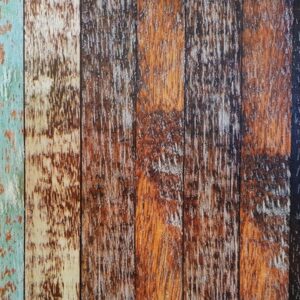Importance of Wood Moisture Content

Basics of Wood Moisture Content
The moisture content is defined as the weight of the water contained in the wood expressed as a percentage of the ovendry weight of the wood. Thus, the MC may range from zero for ovendry wood to over 100 percent when the water in the wood weights more than the wood. Moisture content (MC) affects nearly every important property of wood. The MC of a piece of wood will vary substantially depending on ambient conditions. The effective utilization of wood is dependent on three main factors: (1) MC, (2) density, and (3) proper species identification. Therefore, it is important that we have reliable and accurate methods of determining wood MC.
Determination of Moisture Content
The two basic methods for determining wood MC are the ovendrying method and the distillation method. The ovendrying method is generally accepted for basic laboratory work and as a standard for calibrating other methods. This method involves weighing a specimen before and after ovendrying to a constant weight at 103 C. Because the quantities used for defining MC are measured directly, this method is the most precise. However, it is physically impossible to remove all the hygroscopic water by heating without pyrolyzing the wood. Therefore, constant weight is defined as no further weight loss when a specimen is weighed to an accuracy of +/- 2 percent at 2-hour intervals.
If wood has been preservative-treated or impregnated with other chemicals, ovendrying moisture measurements may be inaccurate. An impregnant that is volatile at oven temperatures will evaporate during ovendrying, and the resulting weight loss can be misinterpreted as due to evaporated water. An impregnant that is nonvolatile will remain in the wood and so increase the apparent ovendry weight of the wood. For treated wood, the distillation method may be more accurate than ovendrying for the determination of wood MC. In the former method, water is removed from the wood specimen in a closed system, in which the water is collected and measured directly. Any extraneous organic materials in the wood are dissolved out of the specimen by an organic solvent during the water extraction process. The distillation method is also more accurate than then the ovendry method for some species that contain large amounts of volatile materials other than water.
Disadvantages of MC Methods
The disadvantages of these two basic methods is both are slow. The drying period is typically 24 hours for the ovendry method. Also, the methods require expensive equipment, considerable skill in manipulation, and they are destructive to the sample. These issues have prompted the search for methods that are faster and simpler but do not compromise accuracy.
Electric Moisture Meters
There are three types of electric moisture meter, each based on the fundamental relationship between moisture content and a different electric property. The meters are (1) conductance-type (resistance type), which uses the relationship between moisture content and direct current conductance, (2) power-loss type which uses the relationship between moisture content and the dielectric loss factor of wood, and (3) capacitance-type, which uses the relationship between moisture content and the dielectric constant of the wood. The latter two types are known as dielectric types. Meters that use the relationship between moisture content and electric conductance have been traditionally referred to as “resistance-type” meters. However, it is conductance that increases with increasing moisture content so the more descriptive term for these meters is “conductance-type.” Conductance is the reciprocal of resistance.
Electric Conductance
The electric properties of wood that are important for electric moisture meters are direct current conductance (resistance) and the dielectric constant and loss tangent (power factor). Electric conductance is the property of a material that permits the flow of electric current through the material. The magnitude of conductance determines the current flow with a given potential difference or electromotive force across the conductor. In most cases, the magnitudes of conductance (or resistance), electromotive force, and current are related by a simple proportion known as Ohm’s law.
Meet the Author
Dr. Todd Shupe is the President of Wood Science Consulting, LLC. He is a well-recognized expert on wood forensics, wood preservation, wood decay and degradation, and wood species identification. He has a broad background in new product development, quality management, and marketing and sales in both the public and private sectors. For more information please visit DrToddShupe.com.
We welcome your comments below.
Thank you for visiting. We trust that you have enjoyed reading our articles.
Liked this post? Read more below or search for more topics . . .

